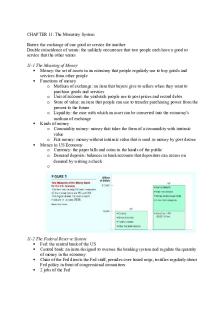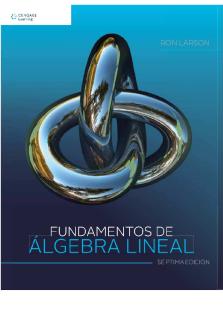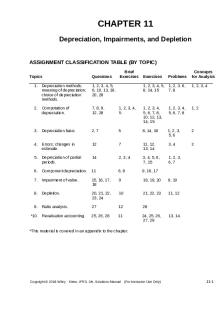Ch11 - chapter 11 larson PDF

| Title | Ch11 - chapter 11 larson |
|---|---|
| Author | Den Javier |
| Course | Financial Accounting |
| Institution | Algonquin College |
| Pages | 67 |
| File Size | 1.1 MB |
| File Type | |
| Total Downloads | 75 |
| Total Views | 195 |
Summary
chapter 11 larson...
Description
Last revised: January 23, 2016.
SOLUTIONS MANUAL to accompany
Fundamental Accounting Principles 15th Canadian Edition by Larson/Jensen/Dieckmann
Prepared by: Laura Dallas, Kwantlen Polytechnic University Technical checks by: Elizabeth Hicks, Douglas College Michelle Young, CPA
Solutions Manual to accompany Fundamental Accounting Principles, 15th Canadian Edition. © 2016 McGraw-Hill Education Ltd.
1 1 1
Last revised: January 23, 2016.
Chapter 11
Partnerships
Chapter Opening Critical Thinking Challenge Questions* What were the advantages of Elana and Leo choosing the partnership form of a business organization? When Elana and Leo returned home with the vision for the product, the partnership form of business organization was an advantage as they were able to quickly get the company started after setting up bank financing, taking advantage of ease of formation and low start-up costs. Leo and Elana also chose the partnership form of business organization, as they were able to take advantage of less bureaucracy than corporations, and they felt they could focus on the areas of their talent. By both being involved in the partnership, Leo and Elana were able to focus on areas of the business that matched with their skillsets, increasing effectiveness from pooling talent. Leo focused on roasting, design and operations, and Elana managed sales, marketing and finance. When starting up Kicking Horse Coffee, there were quite a few advantages for Elana and Leo to choose the partnership form of a business organization; however, in retrospect, Elana advises future business owners considering a partnership to avoid a 50/50 split, as it can lead to issues when conflicting views surface. She also suggests obtaining good legal counsel to develop the partnership agreement. This is particularly prudent for young, new business owners to minimize the conflicts and address potential areas of concerns before the business gets started.
The Chapter 11 Critical Thinking Challenge questions are asked at the beginning of this chapter. Students are reminded at the conclusion of the chapter to refer to the Critical Thinking Challenge questions at the beginning of the chapter. The solutions to the Critical Thinking Challenge questions are available here in the Solutions Manual and accessible to students on Connect.
Solutions Manual to accompany Fundamental Accounting Principles, 15th Canadian Edition. © 2016 McGraw-Hill Education Ltd.
1 1 2
Last revised: January 23, 2016.
Concept Review Questions 1.
No. Partners have the right to select the people with whom they associate themselves as partners.
2.
Death, bankruptcy, or the legal inability of a partner to contract ends a partnership. In addition, if a partnership is organized for the purpose of completing a specific business project, the partnership ends when the project is completed. If the business for which the partnership was organized cannot be completed but goes on indefinitely, the partnership may be dissolved at the will of any one of its partners.
3.
Mutual agency means that each partner is an agent of the partnership and can commit it to contracts that are within the scope of its business.
4.
Yes. Such an agreement is binding on members of the partnership. It is also binding on outsiders who know of the agreement. However, it is not binding on outsiders who do not know of the agreement.
5.
Unlimited liability means that the creditors of a partnership have the right to require each partner to be personally responsible for all debts of the partnership.
6.
All partners in a general partnership have unlimited liability. A limited partnership includes both general and limited partners, but the limited partners have no personal liability for partnership debts. Also, the general partners assume the management duties of the partnership.
7.
Leung’s claim is not valid unless the previously agreed upon method of sharing profit and losses granted Leung an annual salary of $25,000. Unless the partnership agreement says otherwise, partners have no claim to a salary allowance in payment for their services.
8.
If partners agree on the method of sharing profit, but say nothing of losses, any losses are shared in the same manner as profit.
9.
The allocation of profit to the partners is reported on the statement of changes in equity.
10.
At all times in the accounting history of a partnership, assets must equal liabilities plus owners’ equity. When the assets are converted to cash, any gains or losses are allocated to the capital accounts of the partners; and when creditors’ claims are paid, assets and liabilities are reduced by equal amounts. Therefore, when the remaining assets are in the form of cash, the amount of cash must equal the proprietary claims of the partners.
11.
No. Kay is still liable to her former partners for her share of the losses.
12.
The remaining partners should share the decline in their equities in accordance with their profit-and-loss-sharing ratio
Solutions Manual to accompany Fundamental Accounting Principles, 15th Canadian Edition. © 2016 McGraw-Hill Education Ltd.
1 1 3
Last revised: January 23, 2016.
13.
Advantages of a 50/50 partnership split:
Each partner has an equal share in the distribution of profits Provides both partners an equal say in the management of the business Disadvantages of a 50/50 Split:
If a disagreement arises in the partnership, remediation can be a challenge and can result in a significant delay on important decisions. To overcome this it is helpful to allocate a small percentage of the ownership of the partnership to a third party to act as a mediary. One partner may feel they contribute more to the partnership in terms of time, expertise etc. and a 50% profit distribution may not be equitable. An option may be to have a detailed partnership agreement that provides additional compensation by way of a salary allowance or a stated income allocation rate of 1.5:1 or 2:1. Benefits of obtaining legal counsel to form a partnership agreement:
Legal counsel helps to provide advice to the partners in structuring an effective partnership agreement. Partnership agreements are important to ensure the partnership functions effectively and disagreements are minimized. Topics the partnership agreement should include: who has signing authority on bank accounts/debt acquisition, describe the role and expectations/contributions of each partner, specific terms relating to profit allocations and salary allowances, approach to making key decisions, and approach to resolution in the event of a dispute.
Solutions Manual to accompany Fundamental Accounting Principles, 15th Canadian Edition. © 2016 McGraw-Hill Education Ltd.
1 1 4
Last revised: January 23, 2016.
QUICK STUDY Quick Study 11-1 (10 minutes) The partnership will probably have to pay because it is a merchandising firm. That is, if the vendor knows nothing to the contrary, the vendor may assume that Campbell has the right, because of mutual agency, to bind the firm to contracts for the purchase of merchandise. Under these circumstances, the public accounting firm is not in the merchandising business. Because the purchase of merchandise to be sold is not within the normal scope of the business of this firm, the vendor has no right to assume Campbell is acting as the agent for the partnership. Hence, the firm probably will not have to pay.
Quick Study 11-2 (10 minutes) Since Hillier is a limited partner, he is not personally liable for any debts of the partnership.
Quick Study 11-3 (10 minutes) 2017 Mar. 1
Cash........................................................................................ 50,000 Len Peters, Capital........................................................... Beau Silver, Capital.......................................................... To record initial capital investments.
20,000 30,000
Solutions Manual to accompany Fundamental Accounting Principles, 15th Canadian Edition. © 2016 McGraw-Hill Education Ltd.
1 1 5
Last revised: January 23, 2016.
Quick Study 11-4 (10 minutes) a. Profit and losses are split equally in the absence of a partnership agreement. Therefore, $120,000/2 = $60,000 should be allocated to each partner. b. 2017 Mar. 31
Income Summary................................................................... 120,000 Bill Ace, Capital............................................................... Dennis Bud, Capital......................................................... To allocate profit and close the Income Summary account
60,000 60,000
c. 2017 Mar. 31
Bill Ace, Capital...................................................................... 60,000 Dennis Bud, Capital................................................................ 60,000 Income Summary............................................................. To allocate loss and close the Income Summary account
120,000
Solutions Manual to accompany Fundamental Accounting Principles, 15th Canadian Edition. © 2016 McGraw-Hill Education Ltd.
1 1 6
Last revised: January 23, 2016.
Quick Study 11-5 (20 minutes) 2017 Dec. 31 Income Summary............................................................. Lisa Montgomery, Capital........................................ Joel Chalmers, Capital............................................. To transfer profit of $48,000 from the Income Summary account to the partners’ capital accounts.
48,000 41,500 6,500
Calculations: Montgomery
Profit.............................................................. Salary allowances: Montgomery................................................ Chalmers...................................................... Total salaries allocation ................................ Balance of profit over allocated................... Balance allocated equally: Montgomery (50% × −$7,000)..................... Chalmers (50% × −$7,000).......................... Total allocated equally................................ Balance of Profit........................................... Allocation to each partner ...........................
Chalmers
Total
$48,000 $45,000 $10,000 (55,000) ($7,000) (3,500) (3,500) $ $41,500
$ 6,500
7,000 0 $48,000
Solutions Manual to accompany Fundamental Accounting Principles, 15th Canadian Edition. © 2016 McGraw-Hill Education Ltd.
1 1 7
Last revised: January 23, 2016.
Quick Study 11-6 (15 minutes) 2017 Dec. 31 Jenn Smith, Capital...........................................................56,000 Mike Yang, Capital.............................................................24,000 Income Summary.......................................................... To transfer loss of $80,000 from the Income Summary account to the partners’ capital accounts.
80,000
Calculations: Smith
Loss............................................................... Salary allowances: Smith............................................................ Yang............................................................. Total salaries allocation ............................... Balance of loss over allocated..................... Balance allocated 3:2 Smith (3/5 × −$285,000)............................... Yang (2/5 × −$285,000)................................ Total allocated 3:2....................................... Balance of loss.............................................. Allocation to each partner ...........................
Yang
Total
$(80,000) $115,000 $90,000 (205,000) ($285,000) (171,000) (114,000) $ $(56,000)
$(24,000)
285,000 0 $(80,000)
Quick Study 11-7 (10 minutes) 2017 Oct. 1
Cash..................................................................................................... 30,000 Kate, Capital.................................................................................30,000 To record admission of Kate by investment; $30,000 + $30,000 + $30,000 = $90,000 × 1/3 = $30,000 to Kate.
Quick Study 11-8 (10 minutes) 2017 Mar. 12
Ramos, Capital.................................................................................... 10,000 Bailey, Capital...................................................................................... 10,000 Kate, Capital.................................................................................20,000 To record admission of Kate by purchase; $60,000 total equity × 1/3 = $20,000 to Kate.
Solutions Manual to accompany Fundamental Accounting Principles, 15th Canadian Edition. © 2016 McGraw-Hill Education Ltd.
1 1 8
Last revised: January 23, 2016.
Solutions Manual to accompany Fundamental Accounting Principles, 15th Canadian Edition. © 2016 McGraw-Hill Education Ltd.
1 1 9
Last revised: January 23, 2016.
Quick Study 11-9 (10 minutes) 2017 June 17
Cash..................................................................................................... 30,000 Pollard, Capital.................................................................................... 3,000 Mission, Capital................................................................................... 3,000 Bishop, Capital............................................................................... To record Bishop’s admission and bonus; $6,000* × ½ = $3,000.
36,000
*$60,000 + $30,000 = $90,000 total equity × 40% = $36,000 Bishop equity; $36,000 − $30,000 = $6,000.
Quick Study 11-10 (10 minutes) 2017 Apr. 21
Cash..................................................................................................... 30,000 Wilson, Capital............................................................................... Beacon, Capital.............................................................................. Metcalf, Capital............................................................................... To record admission of Wilson and bonus to old partners; $12,000* × ½ = $6,000.
18,000 6,000 6,000
*$60,000 + $30,000 = $90,000 total equity × 20% = $18,000,.equity of Wilson; $30,000 − $18,000 = $12,000.
Quick Study 11-11 (10 minutes) 2017 Nov. 23
Stuart, Capital...................................................................................... 35,000 Cash................................................................................................ To record retirement of Stuart.
35,000
Quick Study 11-12 (10 minutes) 2017 Nov. 23
Peter, Capital....................................................................................... 22,000 Cash................................................................................................ 15,000 Oliver, Capital................................................................................. 5,250 Wendell, Capital.............................................................................. 1,750 To record retirement of Peter; $22,000 − $15,000 = $7,000 × 3/4 = $5,250 bonus to Oliver; $7,000 × 1/4 = $1,750 bonus to Wendell.
Solutions Manual to accompany Fundamental Accounting Principles, 15th Canadian Edition. © 2016 McGraw-Hill Education Ltd.
1 1 1 0
Last revised: January 23, 2016.
Quick Study 11-13 (10 minutes) 2017 Mar. 15
Darlene, Capital................................................................................... 250,000 Linda, Capital....................................................................................... 25,000 Sue, Capital.......................................................................................... 25,000 Cash................................................................................................ 300,000 To record retirement of Darlene; $300,000 − $250,000 = $50,000 × 2/4 = $25,000 allocated to each remaining partner as a reduction.
Quick Study 11-14 (20 minutes) 2017 Apr. 1
Sam, Capital.......................................................................................... 87,500 Andrew, Capital..................................................................................... 63,000 Mary, Capital.......................................................................................... 56,500 Cash.................................................................................................. 207,000 To record final distribution of cash to partners.
Calculations: Cash Account balances immediately prior to liquidation................................ $ 32,000 Sale of Equipment and allocation of gain 3:2:3................................. +175,000 Balance.................................... $ 207,000
Equipment
Accum. Deprec.
Sam, Capital
$151,000
$36,000 $ 65,000
−151,000 $ 0
−36,000 +22,500 $ 0 $ 87,500
Andrew, Capital
$ 48,000
Mary, Capital
$34,000
+15,000 +22,500 $ 63,000 $ 56,500
Solutions Manual to accompany Fundamental Accounting Principles, 15th Canadian Edition. © 2016 McGraw-Hill Education Ltd.
1 1 1 1
Last revised: January 23, 2016.
Quick Study 11-15 (20 minutes) 2017 Apr. 1
Sam, Capital............................................................... 53,750 Andrew, Capital.......................................................... 40,500 Mary, Capital............................................................... 22,750 Cash....................................................................... 117,000 To record final distribution of cash to partners. Calculations: Ac c u m. Sa m, And r e w, Ma r y , Ca s h Equi pme nt De pr e c . Ca pi t a l Ca pi t a l Ca pi t a l Ac c ou ntb a l a nc e s i mme di a t e l ypr i ort o l i qui da t i on. . . . . . . . . . . . . . . . . . . . . . . . . . . . . . . . . . . $ . . . . . 3 . . 2 . . , 0 0 0 $ 1 5 1 , 0 00 $ 3 6 , 0 0 0 $6 5 , 0 0 0 $4 8 , 0 0 0 $ 3 4 , 0 0 0 Sa l eofEqui pme nta nd a l l oc a t i o nofl os s3 : 2 : 3 . . . . . . . . . . . . . . . . . + . . 8 . . 5 . . , 0 0 0 −1 5 1 , 0 0 0 −3 6 , 0 0 0 −1 1 , 2 5 0 −7 , 5 0 0 −1 1 , 2 5 0 Ba l a nc e . . . . . . . . . . . . . . . . . . . . . . . . . . . . . . . . . . . . . . . $ . . . 1 . . 1 . . 7 . . , 0 0 0 $ 0 $ 0 $5 3 , 7 5 0 $4 0 , 5 0 0 $2 2 , 7 5 0
Solutions Manual to accompany Fundamental Accounting Principles, 15th Canadian Edition. © 2016 McGraw-Hill Education Ltd.
1 1 1 2
Last revised: January 23, 2016.
EXERCISES Exercise 11-1 (20 minutes) 1.
Keith, Scott, and Brian might first consider organizing their business as a general partnership. However, a problem for the new graduates is that they do not have funds and with no past business experience will probably have trouble getting a business loan. Therefore, instead of a partnership, another option is to incorporate. They can find investors to contribute capital for shares. They can structure the financing so that they remain the major shareholders in the company. Several key advantages to the corporate form are that they will have limited liability and potential to sell...
Similar Free PDFs

Ch11 - chapter 11 larson
- 67 Pages

Ch 11 - Ch11
- 2 Pages

Ch11 - ch 11 prep questions
- 41 Pages

Ch11
- 28 Pages

Larson Issuu
- 40 Pages

Larson 12
- 52 Pages

Ch11 - Solution manual ch11
- 83 Pages

Ch11 Kieso IFRS4 SM ch.11
- 82 Pages

Libby 10e Ch11 SM - chapter
- 44 Pages
Popular Institutions
- Tinajero National High School - Annex
- Politeknik Caltex Riau
- Yokohama City University
- SGT University
- University of Al-Qadisiyah
- Divine Word College of Vigan
- Techniek College Rotterdam
- Universidade de Santiago
- Universiti Teknologi MARA Cawangan Johor Kampus Pasir Gudang
- Poltekkes Kemenkes Yogyakarta
- Baguio City National High School
- Colegio san marcos
- preparatoria uno
- Centro de Bachillerato Tecnológico Industrial y de Servicios No. 107
- Dalian Maritime University
- Quang Trung Secondary School
- Colegio Tecnológico en Informática
- Corporación Regional de Educación Superior
- Grupo CEDVA
- Dar Al Uloom University
- Centro de Estudios Preuniversitarios de la Universidad Nacional de Ingeniería
- 上智大学
- Aakash International School, Nuna Majara
- San Felipe Neri Catholic School
- Kang Chiao International School - New Taipei City
- Misamis Occidental National High School
- Institución Educativa Escuela Normal Juan Ladrilleros
- Kolehiyo ng Pantukan
- Batanes State College
- Instituto Continental
- Sekolah Menengah Kejuruan Kesehatan Kaltara (Tarakan)
- Colegio de La Inmaculada Concepcion - Cebu






